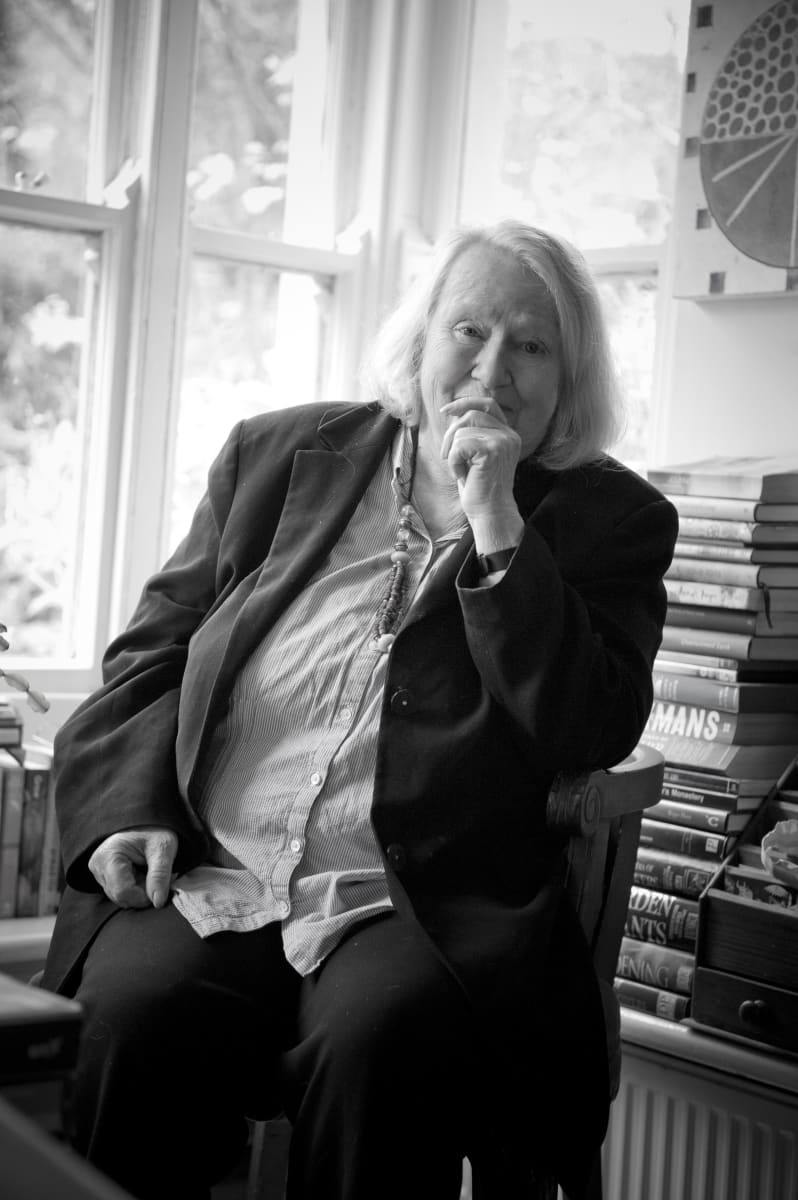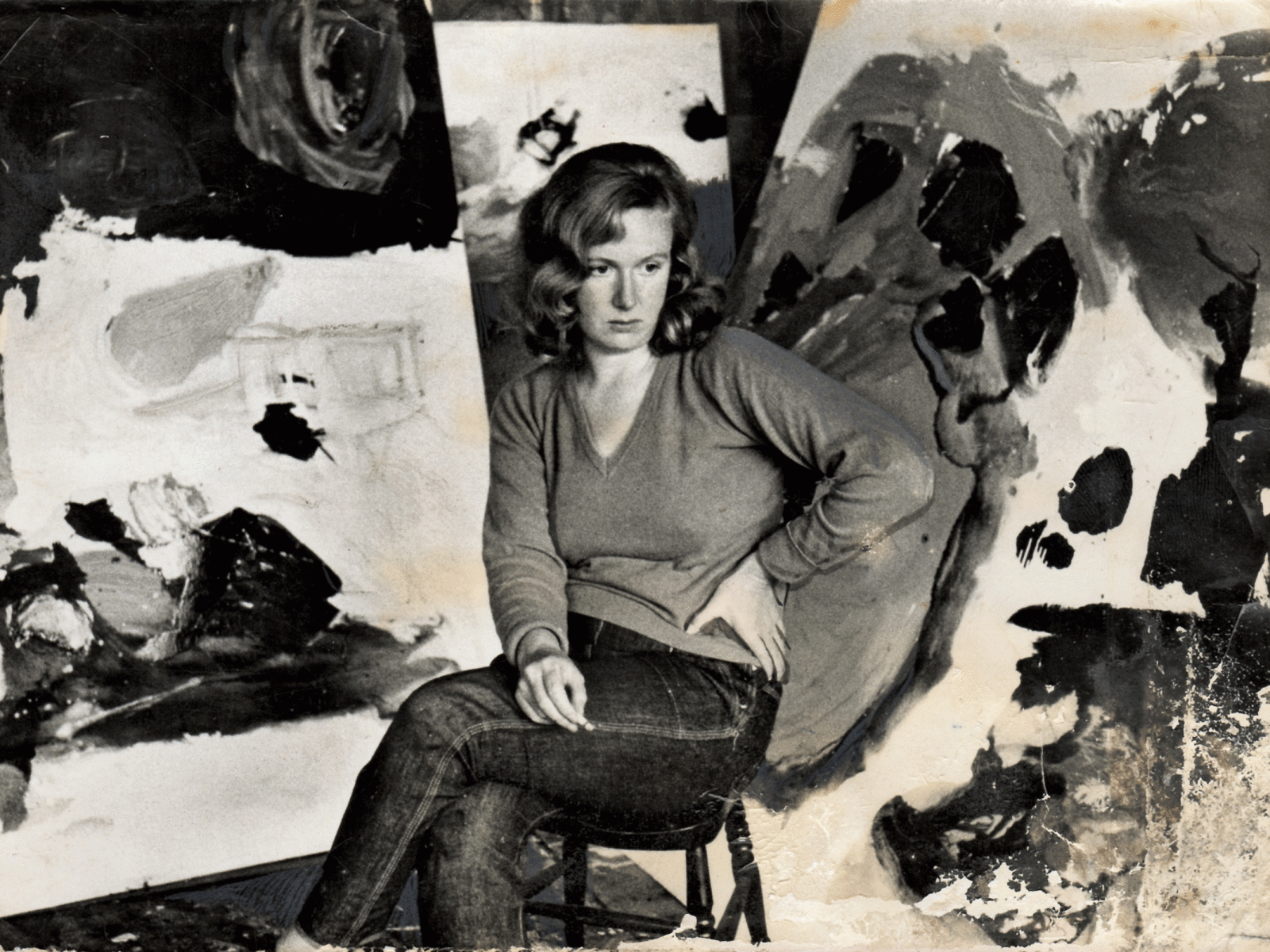Gillian Ayres
Painting is a visual, two dimensional art medium and language – not similar at all to a literary language, but at the same time is there to communicate and express our sublime state, our luminous explosion into space.
Through colour can be created a saturated vision of human scale and sense of experience of place.”
In the mid-1960s Gillian Ayres (1930 - 2018) made a significant change from using the oil and Ripolin on board which had dominated her practice in the 1950s, to instead working with acrylic paint on canvas. A relatively new medium, artists' acrylic paints were first manufactured and introduced into Europe in 1963 by George Rowney (subsequently part of Daler-Rowney). She had originally chosen Ripolin - a French enamel paint – because she knew Picasso had used it; however the emergence of a new, fast-drying, vibrant medium must have been instantly appealing to the young artist who was constantly searching for new ways to expand her visual language. Her first paintings in acrylic were surprisingly figurative, incorporating identifiable forms and linear shapes - seemingly at odds with the visceral action paintings that had immediately preceded them. However, this period of experimentation soon morphed into more familiar territory and by the time the decade turned, she had once again moved to a more organic, liberated form of abstraction.
The earliest works from this period are characterised by the thin application of the medium onto the support, with areas of the canvas often left exposed. As the series developed they became significantly larger – at times over 8 metres in length. By 1973 she had begun to relish more the potential physical properties of the paint itself and began a group of works which include Mali and Biscay. In his monograph on her work, Martin Gayford talks about the paintings of this group as emphasizing “…..the character of a painting as a physical thing, a solid object in its own right. Its thick, gnarled and glutinous surface is built up in layers, trickled and poured down a canvas…..it is close to minimalism, except that it is simultaneously maximalist: visibly furrowed by energetic actions, the paint is built up and flowing down in torrents under its own weight.” (p.111 Gillian Ayres / Art/Books). This is particularly true of Mali, where she pushed the paint to its limits, densely layering the colour onto the canvas to create a sumptuous, tactile surface, richer in colour and impasto than in any of her previous acrylic paintings.
The larger painting entitled Biscay, is a triumph of gestural mark-making and layering of colour, and is one of Ayres most striking paintings of this period. Whilst she always denied the specificity of the titles to their paintings, one cannot escape the immediate association between the painting’s rich blue surface and broad, sweeping brush strokes, with the eponymous stretch of water off the French and North Spanish coast, famed for both its beauty and treacherous seasonal storms. Mali and Biscay were included in a British Council sponsored solo exhibition of her work held at Galeria Alvarez in Portugal in 1977 and alongside these she created and exhibited a small group of related works on paper, two of which are illustrated here; Untitled, 1975 combines heavily worked layers of oil pastel with flourishes of acrylic impasto and the earlier work from 1973 is a masterclass in colour which belies its small scale.
The paintings of this period, of which Mali is one of only a handful of smaller works, sit on the very cusp of the moment when Ayres would turn back to using oil paint. In November 1976, she visited the USA to see an exhibition of Hans Hoffman’s paintings at the Hirshhorn Museum in Washington D.C. The posthumous retrospective was to have a marked effect, and on her return to the UK and filled with a new energy, she once again returned to oil. Informed now by the densely applied acrylic paintings she had made only months before, she began a series of paintings which would come to define her later career and establish her as one of the most important British painters of her generation.
David Cleaton-Roberts, 2020

